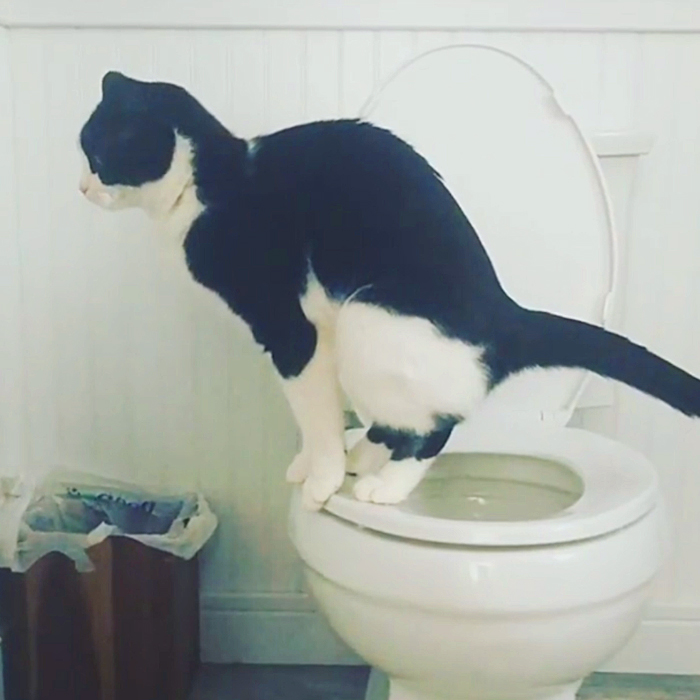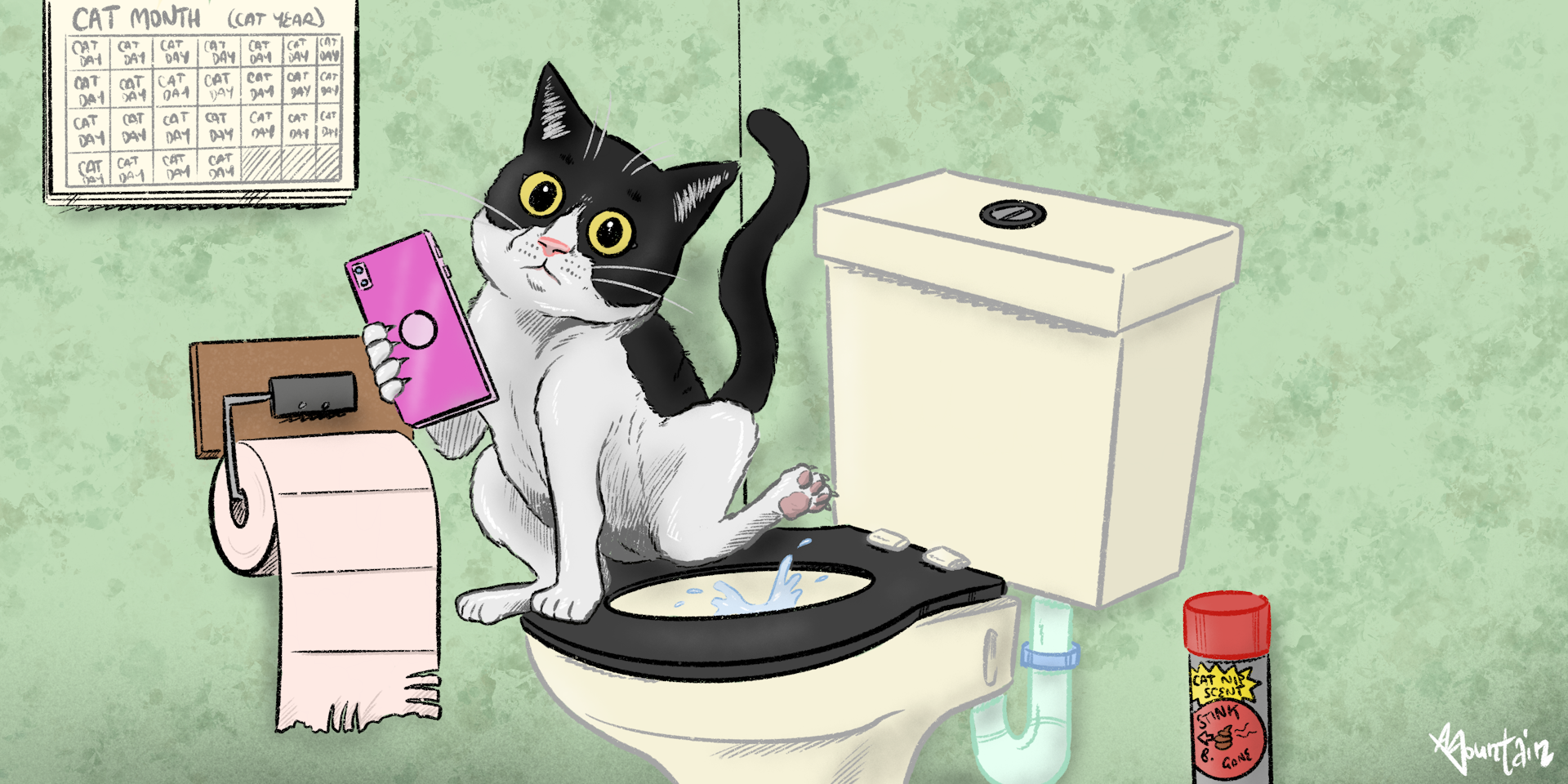How Flushing Animal Waste Down the Toilet Should be Harmful
How Flushing Animal Waste Down the Toilet Should be Harmful
Blog Article
Right here on the next paragraphs you can find some high-quality data in relation to Don't Flush Your Pets Poo Down The Loo, Vet Warns.

When it comes to throwing away waste, particularly animal waste, many people frequently turn to the hassle-free choice of flushing it down the commode. Nevertheless, this relatively very easy solution can have significant consequences for the environment and public health. In this article, we'll explore why flushing animal waste down the bathroom is a poor idea and supply alternate techniques for appropriate disposal.
Introduction
Appropriate waste disposal is crucial for preserving ecological sustainability and public health. While it may appear safe to purge animal waste down the commode, it can lead to various issues, both for the environment and human wellness.
Dangers of flushing animal waste
Environmental impact
Purging animal waste introduces harmful microorganisms and microorganisms right into waterways, which can negatively influence water communities. These microorganisms can infect water sources and harm aquatic life, interrupting delicate ecosystems.
Public health concerns
Animal waste includes hazardous bacteria such as E. coli and Salmonella, which can posture significant health threats to humans. Purging animal waste down the commode can contaminate water products, bring about the spread of conditions and infections.
Alternatives to flushing
As opposed to flushing pet waste down the bathroom, there are numerous alternate disposal approaches that are much more environmentally friendly and sanitary.
Composting
Composting animal waste is an eco-friendly means to deal with it. By composting, organic matter is broken down into nutrient-rich dirt, which can be utilized to feed gardens and plants.
Landfill disposal
Getting rid of pet waste in a landfill is another choice. While not as environmentally friendly as composting, it is a more secure option to flushing, as it protects against the contamination of water resources.
Pet dog waste disposal systems
There are customized animal garbage disposal systems offered that securely and hygienically throw away animal waste. These systems commonly make use of enzymes to break down waste and eliminate smells.
Steps to correct animal garbage disposal
To guarantee correct disposal of animal waste, adhere to these actions:
Scooping and bagging waste
Consistently scoop and bag pet waste utilizing naturally degradable bags. This avoids waste from infecting the environment.
Using assigned waste containers
Dispose of bagged animal waste in assigned waste bins, such as compost containers or garbage dump bins. Prevent flushing it down the commode in all prices.
Cleaning up can and pet dog locations frequently
Routinely tidy litter boxes and family pet locations to avoid the build-up of waste and bacteria. Use pet-safe cleansing items to maintain health.
Advantages of appropriate disposal methods
Taking on appropriate disposal approaches for pet waste provides numerous advantages:
Reduced environmental pollution
Proper disposal techniques minimize the risk of environmental pollution, safeguarding rivers and ecological communities from contamination
Minimized danger of water contamination.
By staying clear of flushing animal waste down the toilet, the risk of water contamination is significantly decreased, guarding public health.
Enhanced cleanliness and hygiene
Proper disposal techniques promote far better sanitation and health, producing a much safer atmosphere for both humans and animals.
Conclusion
Finally, flushing animal waste down the commode is harmful to the setting and public health. By adopting alternative disposal approaches and following correct waste management techniques, we can decrease the unfavorable effect of pet waste and add to a cleaner, much healthier planet.
What To Do With Dog Poo – The Do's And Don'ts Of Disposing Of Faeces
Dog poo bins
Some councils provide dedicated dog waste bins in popular dog-walking areas that can take dog poo that has been bagged but you can legally dispose of dog waste in any public litter bin, as long as it is securely bagged. This also applies to your wheelie bin at home.
Do not flush
Water companies do not recommend flushing dog faeces down the toilet because certain parasites can survive the water processing treatment and are potentially harmful to humans. You should also never consider flushing dog poo that has been bagged down the toilet as the bags will not break down and instead create severe blockages in the sewage system.
In the woods
The Forestry Commission promotes a ‘stick and flick’ method for dealing with waste in the woods. This means finding a stick and using it to flick any poo from off the path so that it is out of the way of other walkers. You could also bury it as long as it is not in an area where there might be livestock.
Livestock
Parasites found in dog poo can be transmitted to livestock if they inadvertently eat infected faeces that has been left on grazing land. This could result in the death of sheep or abortion in cattle so you should always make sure you pick up your dog’s waste in fields where livestock could be present.

Routinely tidy litter boxes and family pet locations to avoid the build-up of waste and bacteria. Use pet-safe cleansing items to maintain health.
Advantages of appropriate disposal methods
Taking on appropriate disposal approaches for pet waste provides numerous advantages:
Reduced environmental pollution
Proper disposal techniques minimize the risk of environmental pollution, safeguarding rivers and ecological communities from contamination
Minimized danger of water contamination.
By staying clear of flushing animal waste down the toilet, the risk of water contamination is significantly decreased, guarding public health.
Enhanced cleanliness and hygiene
Proper disposal techniques promote far better sanitation and health, producing a much safer atmosphere for both humans and animals.
Conclusion
Finally, flushing animal waste down the commode is harmful to the setting and public health. By adopting alternative disposal approaches and following correct waste management techniques, we can decrease the unfavorable effect of pet waste and add to a cleaner, much healthier planet.
What To Do With Dog Poo – The Do's And Don'ts Of Disposing Of Faeces
Dog poo bins
Some councils provide dedicated dog waste bins in popular dog-walking areas that can take dog poo that has been bagged but you can legally dispose of dog waste in any public litter bin, as long as it is securely bagged. This also applies to your wheelie bin at home.
Do not flush
Water companies do not recommend flushing dog faeces down the toilet because certain parasites can survive the water processing treatment and are potentially harmful to humans. You should also never consider flushing dog poo that has been bagged down the toilet as the bags will not break down and instead create severe blockages in the sewage system.
In the woods
The Forestry Commission promotes a ‘stick and flick’ method for dealing with waste in the woods. This means finding a stick and using it to flick any poo from off the path so that it is out of the way of other walkers. You could also bury it as long as it is not in an area where there might be livestock.
Livestock
Parasites found in dog poo can be transmitted to livestock if they inadvertently eat infected faeces that has been left on grazing land. This could result in the death of sheep or abortion in cattle so you should always make sure you pick up your dog’s waste in fields where livestock could be present.

We were brought to that report on Don't Flush Your Pets Poo Down The Loo, Vet Warns through an acquaintance on a different web blog. Are you aware of somebody who is inquisitive about Don't Flush Your Pets Poo Down The Loo, Vet Warns? Take a moment to share it. I praise you for your time. Kindly check our blog back soon.
Website Report this page